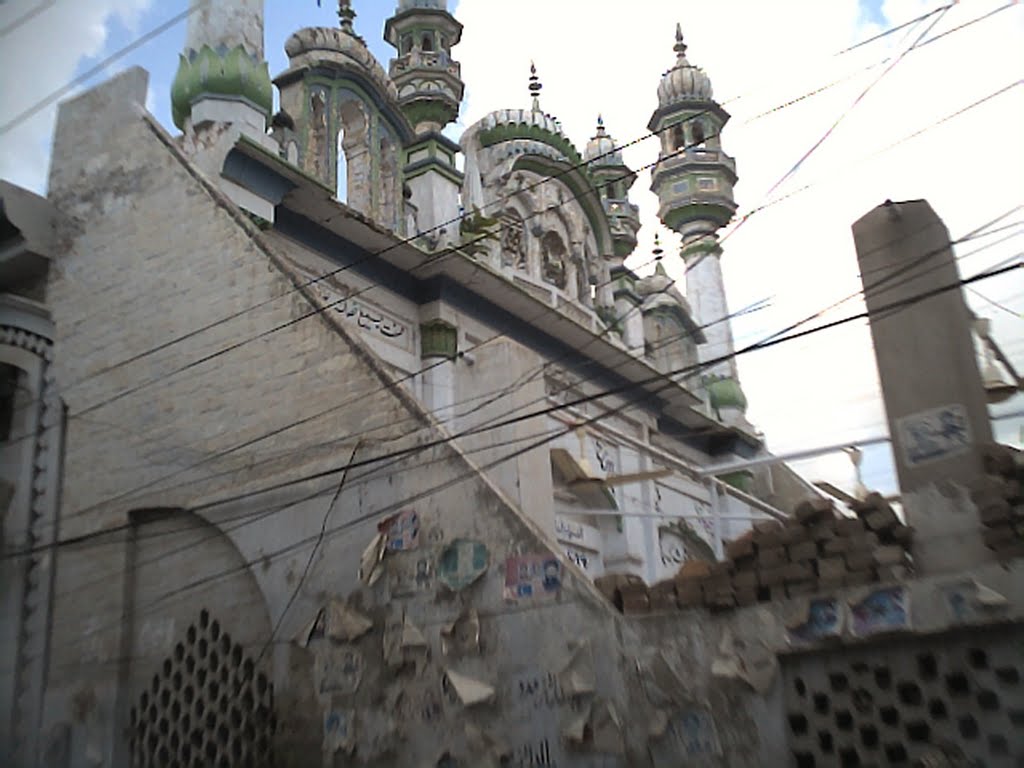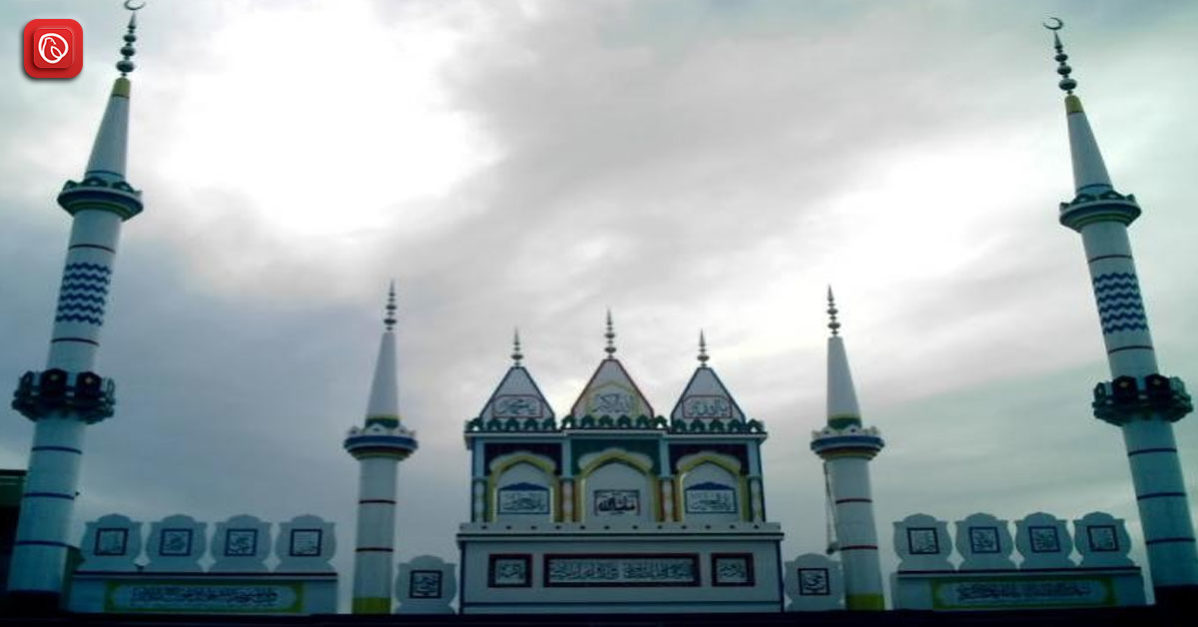Phalia, a town in Punjab, Pakistan, holds a rich historical significance tied to Alexander the Great’s conquests and the legacy of his horse Bucephalus. Its roots trace back to the Battle of the Hydaspes River in 326 BC, where Alexander defeated King Porus. The city of Bucephala, named after Alexander’s beloved horse, was believed to be situated near the modern-day Jhelum River, not far from Phalia.
Over time, Phalia has evolved into a tehsil of Mandi Bahauddin District, encompassing various subdivisions like Phalia Ameer, Phalia Keeman, Phalia Boota, and Phalia Mehman, named after the forefathers of the Tarar tribe. With its expansion, Phalia now includes additional towns.
The town’s geography places it strategically between Mandi Bahauddin and Gujrat, with a moderate climate characterised by hot summers and mild winters. Healthcare facilities, including the THH (Tehsil Headquarters Hospital) and private clinics, cater to the population’s medical needs.
Phalia, though not large, boasts a diverse population primarily comprising Muslims, with a minority Christian community. Punjabi is the predominant language, though Urdu’s usage is increasing due to its national status.
Graana.com has prepared a guide to Phalia, highlighting its history, geography, weather, notable personalities, and many other aspects.
History of Phalia

Phalia’s history unfolds like a captivating saga, whispering tales of ancient battles and powerful empires.
The earliest whispers brush against the legend of Alexander the Great. In 326 BC, after a fierce battle on the banks of the Jhelum River (then known as the Hydaspes), Alexander supposedly founded a city named Bucephala to honor his loyal horse of the same name. While the exact location of Bucephala remains debated by historians, some believe it lies beneath the modern town of Phalia. The thought of walking on ground potentially trod by Alexander himself adds an undeniable mystique to Phalia’s story.
Centuries flowed by, and the region witnessed the rise and fall of empires. The Delhi Sultanate, a vast dominion, swept through the area in the 12th century, leaving its mark on the cultural tapestry. Then came the grand Mughal era, renowned for its artistic and architectural marvels. During this time, Sufi saints, revered for their piety and mystical teachings, played a pivotal role. Traveling across the land, they spread the message of Islam, establishing shrines known as dargahs. Even today, you might stumble upon one of these serene dargahs in Phalia, a silent testament to the enduring influence of those Sufi preachers.
The 10th century marked a significant shift with the Ghaznavid dynasty’s rise. Sultan Mahmud Ghaznavi, following in his father’s footsteps, expanded the empire’s reach. He conquered the Shahis in Kabul and eventually the Punjab region. This period also saw the gradual spread of Islam, largely due to the efforts of Sufi missionaries. Their dargahs, scattered throughout the landscape, stand as a reminder of their lasting impact. A historical mound and a shrine in Mohalla Ameer, sadly partially lost to development in 2010, offered a glimpse into Phalia’s ancient past.
British Rule and Post-Partition
The Mughal Empire’s decline paved the way for the Sikhs, who invaded and occupied the Mandi Bahauddin district where Phalia resides. This period brought hardship to the Muslim population who faced restrictions under Sikh rule. However, with the arrival of British rule, the district saw a rise in population and importance.
As the winds of independence swept across the subcontinent in the mid-20th century, the predominantly Muslim population of Phalia wholeheartedly supported the Muslim League and the Pakistan Movement. With the creation of Pakistan in 1947, came a time of population flux. While minority Hindus and Sikhs migrated to India, Muslim refugees from India found a new home in Mandi Bahauddin district, including Phalia.
Today, Phalia stands tall, a vibrant town that has embraced its rich past. The echoes of ancient empires and the whispers of Sufi saints mingle with the sounds of a modern town on the move. As you explore its streets, you might just discover a hidden gem, a forgotten piece of history waiting to be rediscovered. Phalia’s story is a testament to the enduring spirit of its people, a place that cherishes its heritage while forging a bright future.
Phalia Location

Phalia enjoys a central position within the district. Historical records suggest it might have been situated near the ancient city of Bucephala, though the exact location is debated. Today, Phalia finds itself well-connected to surrounding cities:
- Mandi Bahauddin: 23 kilometres (14 miles) away
- Gujrat: 50 kilometres (31 miles) away
- Malakwal: 45 kilometres (28 miles) away
- Salam Interchange (M-2 Motorway): 80 kilometres (50 miles) away
Phalia Weather
The town experiences a moderate climate characterised by distinct seasons. Summers bring sweltering heat, with daytime temperatures soaring up to 40 °C (104 °F). Conversely, winters are relatively mild, though the mercury may occasionally dip below freezing, reaching lows of −2 °C (28 °F). Throughout the year, Phalia receives an average annual rainfall of around 50 millimetres (2.0 inches), sustaining the region’s agricultural activities and contributing to its lush greenery.
Language
The language predominantly spoken in Phalia is Punjabi, reflecting the linguistic heritage of the region. However, Urdu is also becoming increasingly prominent, especially due to its status as the national language of Pakistan. As a result, residents of Phalia may use both Punjabi and Urdu in their daily interactions and communications.
Religion

The primary religion practiced in Phalia is Islam, with most of the population adhering to its teachings and principles. Mosques serve as places of worship and community gathering, where residents come together for daily prayers and religious events.
While Islam is the predominant religion, there is also a minority Christian community in Phalia. Christians in the town participate in their own religious practices and have their places of worship.
Agriculture and Industry
Agriculture is the backbone of Phalia’s economy, with the majority of its population engaged in farming and related activities. The fertile land and favorable climate make it ideal for cultivating crops such as wheat, rice, sugarcane, and vegetables. Additionally, fruits like citrus, mangoes, and guavas thrive in the region’s orchards.
In recent years, there has been a growing emphasis on modernising agricultural practices, with farmers adopting new technologies and techniques to increase productivity and efficiency. This includes the use of mechanised farming equipment, irrigation systems, and improved crop varieties.
Apart from agriculture, Phalia also has a small industrial sector, primarily focused on small-scale manufacturing and cottage industries. Industries such as textiles, ceramics, and food processing contribute to the local economy and provide employment opportunities for the residents.
While agriculture remains the primary economic driver, efforts are being made to diversify the industrial base and attract investment in sectors such as information technology and services. This diversification aims to create additional sources of income and employment, ensuring sustainable growth and development in Phalia.
Notable Personalities of Phalia

Phalia has produced several notable personalities who have made significant contributions to various fields. Some of these individuals include:
- Mustansar Hussain Tarar: A renowned writer, actor, and television host, Mustansar Hussain Tarar is celebrated for his literary works, travelogues, and contributions to Pakistani cinema and television.
- Muhammad Tariq Tarar: Known for his philanthropic efforts and community service, Muhammad Tariq Tarar has played a vital role in promoting education and healthcare initiatives in Phalia and surrounding areas.
- Pir Syed Muhammad Binyamin Rizvi: A spiritual leader and Sufi saint, Pir Syed Muhammad Binyamin Rizvi has a large following in Phalia and is revered for his teachings on spirituality and Islamic mysticism.
- Parvaiz Mehdi Qureshi: An accomplished artist and painter, Parvaiz Mehdi Qureshi has gained recognition for his vibrant and expressive artwork, which often explores themes of culture, tradition, and identity.
- Asif Bashir Bhagat: A notable figure in the legal profession, Asif Bashir Bhagat has served as a respected advocate and legal advisor. He helped in contributing to the administration of justice in Phalia and beyond.
- Basma Riaz Choudhry: A trailblazer in the field of education, Basma Riaz Choudhry has dedicated her career to promoting literacy and empowerment, particularly among women and marginalised communities.
- Muhammad Ijaz Ahmed Chaudhary: A prominent political figure, Muhammad Ijaz Ahmed Chaudhary has represented Phalia in various governmental capacities. He has been advocating for the welfare and development of the town and its residents.
These notable personalities from Phalia have left a lasting impact on their respective fields and continue to inspire future generations with their achievements and contributions.
FAQs about Phalia
The following are some of the most frequently asked questions about Phalia:
Where is Phalia located?
Phalia is a town situated in the Mandi Bahauddin District of Pakistan. It rests within the vast plains of the Punjab region, known for its fertile agricultural lands.
What’s the climate like in Phalia?
Phalia experiences a moderate climate with hot summers and mild winters. Summers can get quite warm, reaching highs around 40°C (104°F), while winters are generally pleasant with lows occasionally dipping below -2°C (28°F).
Does Phalia have any historical significance?
Some believe Phalia might be located on the site of the ancient city of Bucephala, founded by Alexander the Great in 326 BC. The region also witnessed the rise and fall of empires like the Delhi Sultanate and the Mughals. Sufi saints played a crucial role in spreading Islam during this period. They left behind shrines (dargahs) that still dot the landscape.
What’s Phalia known for today?
Today, Phalia is a thriving town. It has transformed from a small village to a bustling center with markets, schools, and a growing economy. The town retains a connection to its past, with some historical sites like shrines still present.
How can I get to Phalia?
Phalia enjoys a central location within the Mandi Bahauddin District. It’s well-connected to surrounding cities like Mandi Bahauddin, Gujrat, and Malakwal. The M-2 Motorway’s Salam Interchange is also within reach, making the city accessible by road.
For more informative blogs, visit the Graana Blog.




